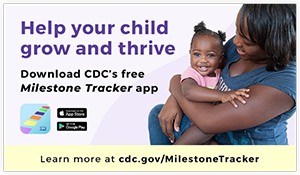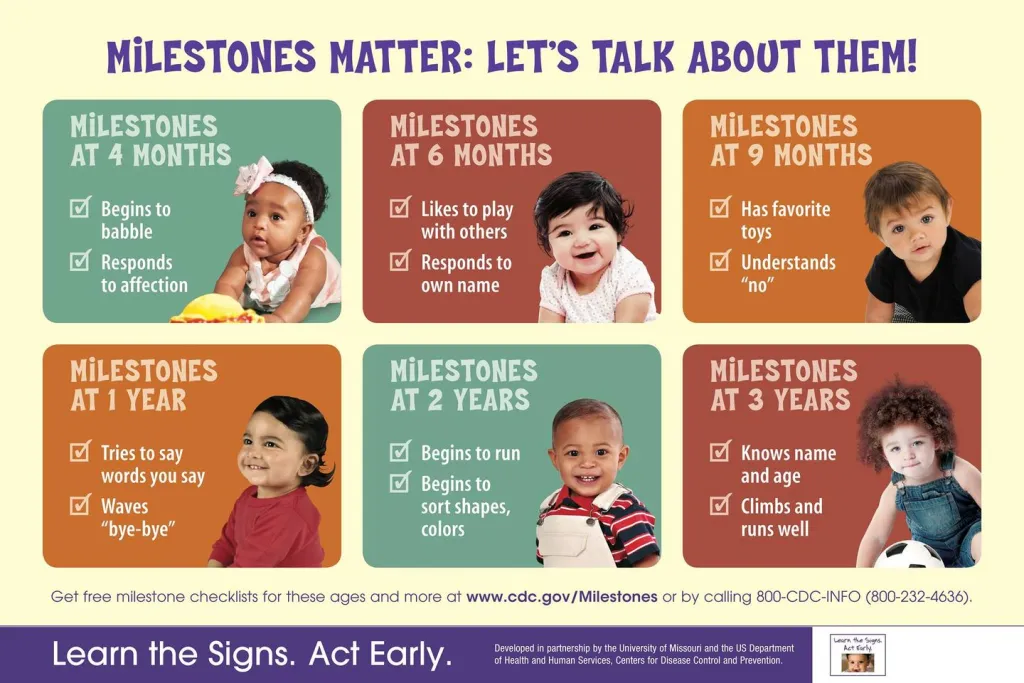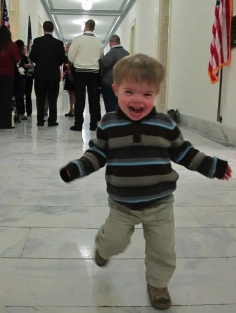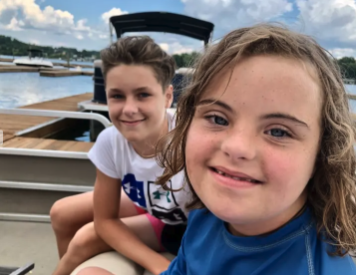Act Early 0-5 Years
The Center for Family Involvement is working with the Virginia Department of Health (VDH), VCU Children's Hospital, the CDC Learn the Signs Act Early Ambassador, VIrginia's Early Intervention program, the 9 Ready Region offices, PEATC, the Arc of Virginia's New Path Program, Virginia Health Catalyst, and many others to improve Prenatal to Age 3 systems and services in Virginia. For more information about this important work, please email Dana Yarbrough
Virginia Early Intervention – This site provides information, resources and a broad range of professional development efforts specifically designed for early interventionists, students, families, faculty and all committed to ongoing learning.
Infant & Toddler Connection of Virginia – The Infant & Toddler Connection of Virginia is Virginia’s early intervention system for infants and toddlers (age 0-36 months) with disabilities and their families. Any infant or toddler in Virginia who isn’t developing as expected or who has a medical condition that can delay typical development is eligible to receive early intervention supports and services under Part C of the Individuals with Disabilities Education Act (IDEA).
Do you have developmental concerns but aren’t sure what to do next?
Next Steps for Families and Caregivers: Form
For daily updates, follow us on facebook. Learn the Signs. Act Early. Virginia | Facebook
For more resources, click here to visit the CDC LTSAE website.https://www.cdc.gov/act-early/
From birth to 5 years, your child should reach milestones in how he plays, learns, speaks, acts and moves. Track your child’s development and act early if you have a concern.

View ADA Accessible version of graphic above
Skills such as taking a first step, smiling for the first time, and waving “bye bye” are called developmental milestones. Children reach milestones in how they play, learn, speak, act, and move (crawling, walking, etc.).
Milestones matter! Track your child’s milestones from age 2 months to 5 years with CDC’s easy-to-use illustrated checklists; get tips from CDC for encouraging your child’s development; and find out what to do if you are ever concerned about how your child is developing.
From birth to age 5, your child should reach milestones in how he or she plays, learns, speaks, acts, and moves. Photos and videos in this app illustrate each milestone and make tracking them for your child easy and fun!
CDC's Milestone Tracker App
- Print the milestone checklists (PDF) pdf icon[2 MB, 20 Pages, 508]
- Download the Milestone Tracker mobile app
- View the Milestones in Action photo and video library
- Download it free today on iOS and Android devices in English and Spanish!
Early Intervention
Find your state's or territories early intervention program -
- Is the term used to describe the services and supports that are available to babies and young children with developmental delays and disabilities and their families.
- May include speech therapy, physical therapy, and other types of services based on the needs of the child and family.
- Can have a significant impact on a child’s ability to learn new skills and overcome challenges and can increase success in school and life.
- Programs are available in every state and territory (see each program’s contact information below). These publicly funded programs provide services for free or at reduced cost for any child who is eligible.
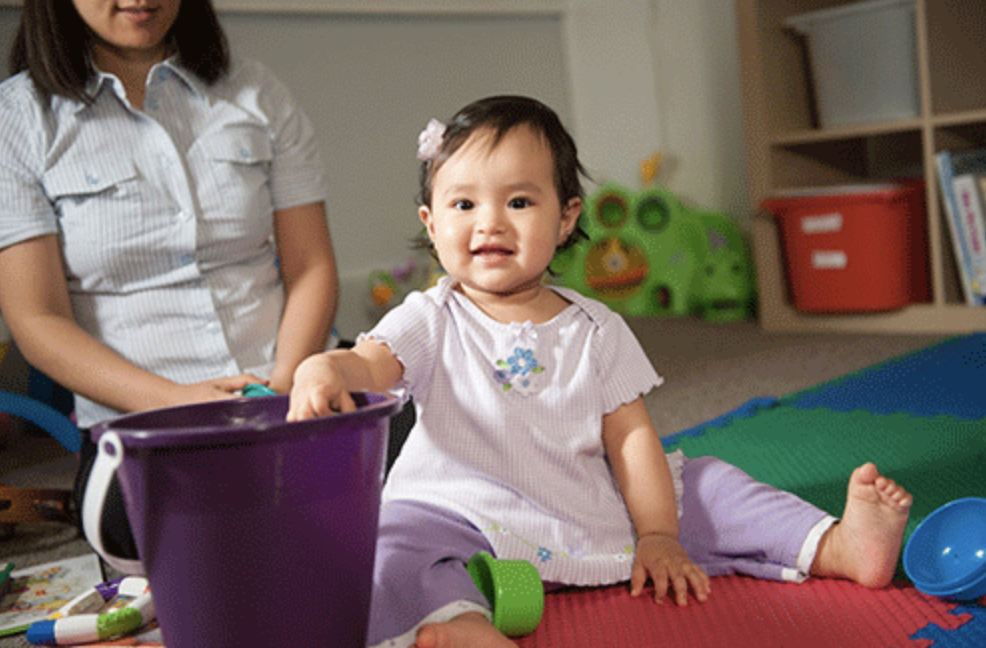

How do I find out if my child is eligible for services?
-
Eligibility for early intervention services is based on an evaluation of your child’s skills and abilities.
If you, your child’s doctor, or other care provider is concerned about your child’s development, ask to be connected with your state or territory’s early intervention program to find out if your child can get services to help. If your doctor is not able to connect you, you can reach out yourself. A doctor’s referral is not necessary.
- If your child is under age 3: Call your state or territory’s early intervention program (see contacts below) and say: “I have concerns about my child’s development and I would like to have my child evaluated to find out if he/she is eligible for early intervention services.”
- If your child is age 3 or older: Click here.
“Learn the Signs. Act Early.” materials are not a substitute for standardized, validated developmental screening tool.


If Your Concerned...
Talk to Your Child’s Doctor
As a parent, you know your child best. If your child is not meeting the milestones for his or her age, or if you think there could be a problem with the way your child plays, learns, speaks, acts, and moves talk to your child’s doctor and share your concerns. Don’t wait. Acting early can make a real difference!
Complete a Milestone Checklist for Your Child’s Age
- Use the Milestone Tracker app or fill out a milestone checklist to track your child’s development. Share the completed checklist or milestone summary with your child’s healthcare provider. Note: these checklists are not a substitute for standardized, validated developmental screening tools.
- Read the tip sheet How to Get Help for Your Child pdf icon[727 KB, 2 Pages,508] for steps you can take to help you act on developmental concerns.
- Click here for a video in American Sign Language (ASL) on what to do if you have concerns about your child’s development.
Ask About Developmental Screening
The American Academy of Pediatrics recommends that children be screened for general development using standardized, validated tools at 9, 18, or 30 months and for autism at 18 and 24 months or whenever a parent or provider has a concern. Ask the doctor about your child’s developmental screening.
Easterseals, provides parents with FREE access to the Ages & Stages Questionnaires®, Third Edition, one of many general developmental screening tools. Click here to learn more and take the screening external icon. Be sure to share the completed questionnaire and results with your child’s doctor.
Milestone Checklists by Age
All Milestone Checklists (by age) in english can be found on the CDC website.
.jpg)
.jpg)
Milestone Checklists with Tips
All Milestone Checklists are available in multiple languages on the CDC Website.
Current languages include:
- English
- Spanish
- Arabic
- Brazilian Portuguese
- Haitian Creole
- Simplified Chinese
- Somali
- Vietnamese
- Farsi
- French
- Hindi
- Korean
- Tagalog
Get Free “Learn the Signs. Act Early.” Materials
Resources on this Page
Milestone Moments Booklet
The Milestones Moments Booklet is available for download in the following languages:
- English
- Spanish


Milestones in Action
Milestones in Action is a free library of photos and videos of developmental milestones available in the following languages:
- English
- Spanish


Collaborating with Health Care Providers and Early Childhood Systems using the CDC’s “Learn the Signs. Act Early.”
Resources to Improve Public Health Outcomes for ALL Children and Families!”
“Learn the Signs. Act Early” Toolkit
AMCHP 2022 Conference
Presenters:
Deana Buck, CDC’s Act Early Ambassador to Virginia, deanabuck@gmail.com
Deepa Srinivasavaradan, CDC’s Act Early Ambassador to New Jersey, deepas@spanadvocacy.org
Jennifer Hall-Lande, CDC’s Act Early Ambassador to Minnesota, hall0440@umn.edu
Melissa Crist, CDC’s Act Early Ambassador to Idaho, mcrist@uidaho.edu
“Learn the Signs. Act Early” Primers:
Healthcare Providers: CDC’s Learn the Signs Act Early for Healthcare Providers (English) https://www.cdc.gov/ncbddd/actearly/pdf/Healthcare-Provider-Primer_English-508.pdf (Spanish)
Home Visiting: Home Visitors (cdc.gov) (English)
Programa de los CDC de Aprenda los signos. (Spanish)
“Learn the Signs. Act Early” Books:
CDC’s Amazing Books for Children | CDC
Access the Milestones: Checklists and Videos
CDC’s Developmental Milestones| CDC
Developmental Monitoring and Screening Fact Sheet: Learn More About Your Child’s Development: Developmental Monitoring and Screening English & Spainish (cdc.gov) (English and Spanish)
Tips for When There is a Developmental Concern:
Concerned about Development? How to Get Help for Your Child (cdc.gov) (English) ¿Le preocupa el desarrollo de su hijo? Cómo ayudar a su hijo (cdc.gov) (Spanish)
Watch Me! Training: Watch Me! Celebrating Milestones and Sharing Concerns | CDC (English)
¡Mírame! Celebremos los indicadores del desarrollo y compartamos las inquietudes | CDC (Spanish)
For more stories, follow us on facebook. Learn the Signs. Act Early. Virginia | Facebook
Arlo
“Arlo was the first person I met who had Down syndrome. I was a first-time mom, reeling from an emergency C-section and a surprise diagnosis – lost. Whenever I couldn’t be with him in the NICU I was researching all things disability. This is when I discovered early intervention.
Arlo’s EI team was a bright light in a dark time. They taught me how to naturally incorporate therapeutic techniques into hi life. Simple things like using a spoon to increase mouth strength, describing pictures in books instead of ‘reading’ them, supporting him on the playground so he used his muscles correctly, walking with a walker and later independently. Most importantly, they supported me. They reminded me to enjoy my baby. They encouraged me to trust my instincts and get second opinions. The were my teachers and in many ways, MY therapists.
Arlo is now a 10-year-old boy who is not just walking but running, swimming, and skiing! He is confident, kind, and silly. He still works hard at everything he does. He continues to talk more and more and therapy will likely always play a part in his life.
Our entire family still uses the techniques his amazing team of therapists taught us nearly a decade ago. That’s the whole point of EI – to teach individuals and families to do for themselves, to have these therapeutic practices become second nature. Like so many things related to disability, all of this ‘special’ stuff is best practices for ALL humans. EI was the best parent coaching I could imagine and it helped tremendously with Arlo’s younger siblings.
EI is still a part of our every day: we’re constantly encouraging Arlo to do for himself, building extra time into transitions, having him order for himself at restaurants, teaching him to pay for things at the farmer’s market, reminding others to ask HIM the questions- not me.
Almost every therapist who has been in Arlo’s circle is still a part of our lives. I think of them almost daily. Forever intertwined, forever grateful, forever touched by one another.” Erin Croyle
Sophia
“When we started early intervention, we had no idea that the case manager would become such an important guide on our journey. When you have a child with a disability, it can feel overwhelming and parents are bound to make mistakes. We applied for a Medicaid waiver and got denied the first and second times. I was ready to give up, but our case manager, Danielle, talked me into appealing the denial. I was ridiculously stressed out by the process, but she kept encouraging me to move forward. She was willing to answer all of my questions and I had a lot. With her guidance we were successful in our appeal and that has been life changing for us. Danielle could see our path ahead more clearly than we could and she knew how important it was to not give up. I will be forever grateful to her. Danielle, you are a rock star.
Danielle also guided us through the big transition at age 3. This is when Sophia aged out of early intervention and started going to school. Once again, I freaked out. My child, who uses a walker, will be in school? What? I simply could not wrap my mind around this transition. But I knew services and therapy needed to continue, so again, I leaned on Danielle for support. I would ask, over and over, explain to me how this will work? She had endless patience with me. Danielle, if I could hand out awards, you get the gold star.
The reason I’m mentioning this is because most people might initially think of early intervention just as therapy for their child. It’s actually much more than that. It’s also support and guidance for the parents.” Jill Rose
Benjamin
How it started: “When Benjamin was as young as three months he concentrated deeply on books, tracking pages and responding with joy. Maybe, like many of us, this was his chance to explore. Mobility otherwise was a challenge. Seemingly simple movements proved exhausting and frustrating for Benjamin. At the recommendation of his physician we sought early intervention services. Through EI Benjamin got 2 years of physical therapy, braces for his feet and ankles, and support from the feeding clinic”
How it’s going “Benjamin is nearly 6 years old. He’s hiking, climbing, running, biking, and cleaning his plate with a ravenous appetite. Our EI physical therapists helped Benjamin and us, his parents, build strength and confidence in what he could and would be able to do. Having learned more about monitoring child development we saw similar signs in Benjamin’s younger sister, Iris, and quickly began overlapping EI services for both our children.”“I wanted to follow up on our early intervention story because I found a video of Sophia with her EI therapist. This video was taken when she was 19 months old and as you can see, even standing up was a major hurdle. Most kids by this age would have been walking for a few months, but for Sophia, walking without a walker will still be a couple years away. I’m also adding photos in the comments of her now, demonstrating how far she has come from this moment in the video.” Jill Rose
Sophia
“I wanted to follow up on our early intervention story because I found a video of Sophia with her EI therapist. This video was taken when she was 19 months old and as you can see, even standing up was a major hurdle. Most kids by this age would have been walking for a few months, but for Sophia, walking without a walker will still be a couple years away. I’m also adding photos in the comments of her now, demonstrating how far she has come from this moment in the video.” Jill Rose
“When our daughter was born, no one, not even our doctor, had a clue she had Down syndrome. I held her, looked at her and knew. I immediately asked our doctor; he examined her palm and said that because the lines looked a certain way, that meant that she didn’t have DS. But she had very, very low muscle tone and couldn’t latch on. While the lactation nurse knew, she kept it to herself until the last day when I was crying – then she confessed that she thought I was correct. Yet she didn’t tell the hospital staff or our doctor. There was so much denial, we were sent home without any information. Eventually our doctor ordered a genetics test. When it was confirmed she did have DS, he suggested we see a specialist since she was only the second patient he had ever treated with DS. It took months and months to get an appointment at that clinic. So much time passed and I had no idea what to research. I didn’t know what to plug into google. Those 2 simple words …
One day a random encounter with a NICU nurse at a potluck changed everything. She casually asked, ‘have you gotten her into early intervention yet?’ ‘So that’s what it’s called?’ I asked, so elated to now finally have the words. If you don’t know what to google, you don’t have a jumping off point, period. She had a phone number and website. She was my angel. I started the process of getting Sophia into early intervention the next day.
I was amazed how behind we were when therapy started. She didn’t walk on her own, without a walker, until she was four years old. Every single step in the right direction, including providing us with the walker, I credit to the early intervention team. The speech therapist helped us with feeding. It’s a connection so many of us don’t make, how intertwined feeding and speech are.
Our daughter just turned 11 and she is doing great. She is walking, talking, even jumping and running. She is our joy. We will forever be grateful for our experience with EI.” Jill Rose
What is Early Intervention in Virginia
This video features Virginia service providers, families, and administrators as they describe early intervention. Video clips and photos are also featured to help viewers understand what early intervention looks like and why it works. For guidance about how to use this video to explain early intervention, check out the following two resources: Letter to Community Partner PDF and Explaining Early Intervention: Virginia’s Statement PDF
Milestones Matter
Track your child's developmental milestones and try brain building tips to add learning to everyday moments!
Track your child's development
Track how your child plays, learns, speaks, acts, and moves with CDC's milestone Tracker app and share all progress and any concerns with their doctor during well-child visits. www.cdc.gove/milestonetracker
